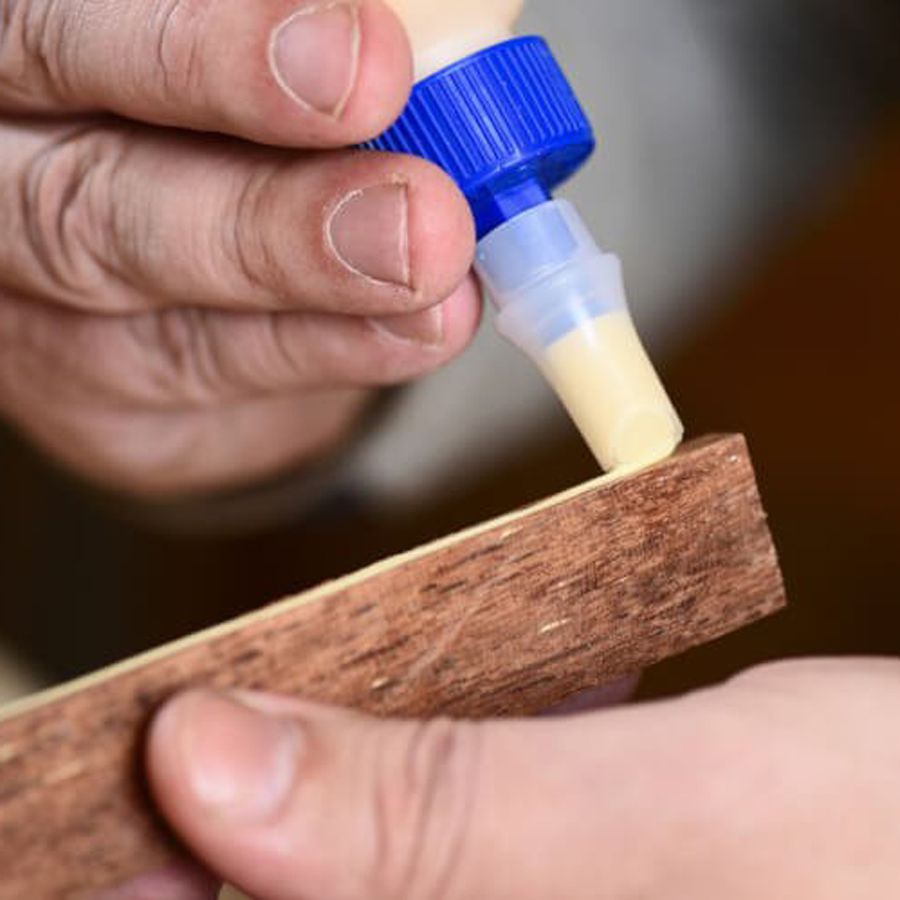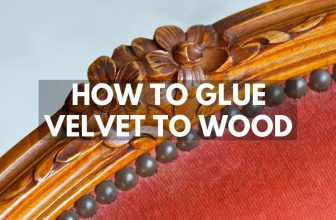
How to Glue Metal to Wood
To bond metal to wood without screws or nails you need an adhesive that will bond to both porous and non-porous surfaces. In this guide, we explain how to glue metal to wood and which type of glue works best.
Whether you need to fix wood to metal or metal to wood, glue is your best option without using any power tools or force. Polyurethane adhesive is a tried and tested choice that bonds very well to both metal and wood. Epoxy resin will also work, as will super glue for smaller projects.
While there are plenty of amazing metal glues and wood glues to choose from, do they all work on BOTH wood and metal?
Which Glue for Metal to Wood?
Polyurethanes, Epoxies, and Cyanoacrylate glue all provide a strong adhesive bond between metal and wood. For most purposes, polyurethane glue will give you the best results. for smaller tasks Cyanoacrylates (Super Glue) will offer the fastest drying time and accuracy. Epoxy resins are especially useful for bonding metal to wood and provide the most long-lasting joint seal.
Epoxy Resin – Has the longest set and cure time but offers the strongest and most permanent bond. You can use it more like a putty so is ideal for joining things at angles and adding strength.
Polyurethane Adhesive – Sticks to wood and metal equally well and has a medium drying time. This type of glue can be absorbed into porous surfaces and expands as it sets to provide a very permanent bond, Also incredibly waterproof so good for outdoor use.
Cyanoacrylates – Super Glue is ideal for gluing small pieces of metal to wood or for jobs that have time requirements. It creates an intense bond that sets hard but can biome brittle over time.
Guide for Gluing Wood and Metal
In this step-by-step guide for gluing metal to wood, you will learn the methods and glue types used by professionals. This involves the preparation, application of glue, and guide to setting things in the right place. First though, here are some precautions to take in before you start.
Safety
When using any kind of adhesive you should always adhere to the user manual and follow any recommended safety precautions. We always recommend using safety goggles and wearing nitrile gloves. Make sure your workspace is clear of hazards and well ventilated. You should only use glue for non-weight-bearing fixtures and for anything heavy you will need to use additional support.
Preparation
To prepare metal for gluing to the wood you need to remove any dirt, grease, oil, and most importantly rust. Start by using a damp cloth to wipe the surface to get rid of any grease, oil, and dirt. Finish by wiping with a dry cloth so that you are left with bare metal. If the metal is rusty then use a wire brush and sandpaper to remove it and repeat the previous process to get rid of dust.
To prepare wood for gluing to metal use a stiff brush to remove debris and give it a quick wipe with a damp cloth to eliminate any dust. The only time you should sand wood for gluing is when you are trying to use less glue.
At Glue Lab, we have always found that rough wooden surfaces hold more glue and so create a stronger bond than smooth sanded wood. This of course doesn’t work if the wooden surface is not stable or has loose splinters which should always be removed before applying any glue.
Application
Now that both wood and metal surfaces are clean and ready to be glued you can plan your application. Read the manufacturer instructions and apply the glue as suggested. It is always best to apply wood and metal glue in one continuous movement to get even coverage.
You may need to spread the glue about to get a thin and even layer that goes right to the edges. Another method is to apply a thick bead of glue so that when you apply pressure to the parts being joined, it naturally disperses between the contact gap.
Setting
Unless you are using a cyanoacrylate adhesive that dries in 10 – 30 seconds, you need to keep everything in place until the glue sets. To do this you can use pressure from heavy objects, gravity, or clamps that stop pieces from moving. Epoxies can take up to 24 hours to fully cure and it is important to avoid the temptation to ‘test’ the bond by touching it before this time.
FAQs
Unless you have experience working with metal, glue, and adhesives you might still have some questions about the process. Here are some frequently asked questions about sticking metal to wood which may provide the information you are looking for.
Why Use Glue for Metal and Wood?
Sometimes screws, nails, and fixings can’t be used to attach a piece of wood to metal or vice versa. This may be to avoid damage to either surface or because glue is the only viable option. Using glue also requires the least use of power tools or expert knowledge and can usually be achieved using simple instructions.
How to Secure Wood to Metal Frames
Metal glue and wood glue both work best when they have large points of contact to apply adhesive. When securing wood to a circular frame you should use more glue than normal to increase the surface area. If the metal frame is square then a thick even bead of glue pressed down will provide excellent coverage.
Does Super Glue Work on Metal to Wood?
Superglue or cyanoacrylate glue bonds to most surfaces including all metals and woods. It provides an almost instant bond and will dry in less than a minute for quick fixes. It will adhere to metals like stainless steel and aluminum as well as gripping to the grain of any wooden surface.






